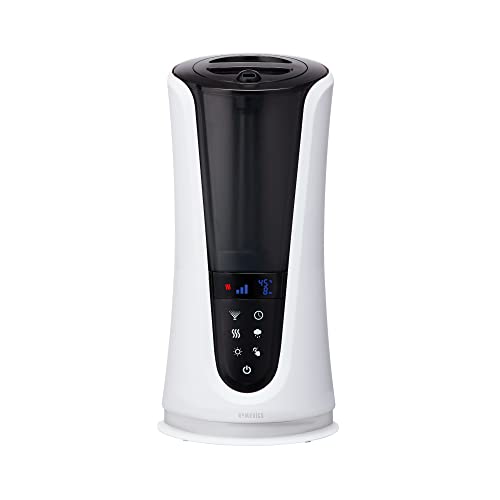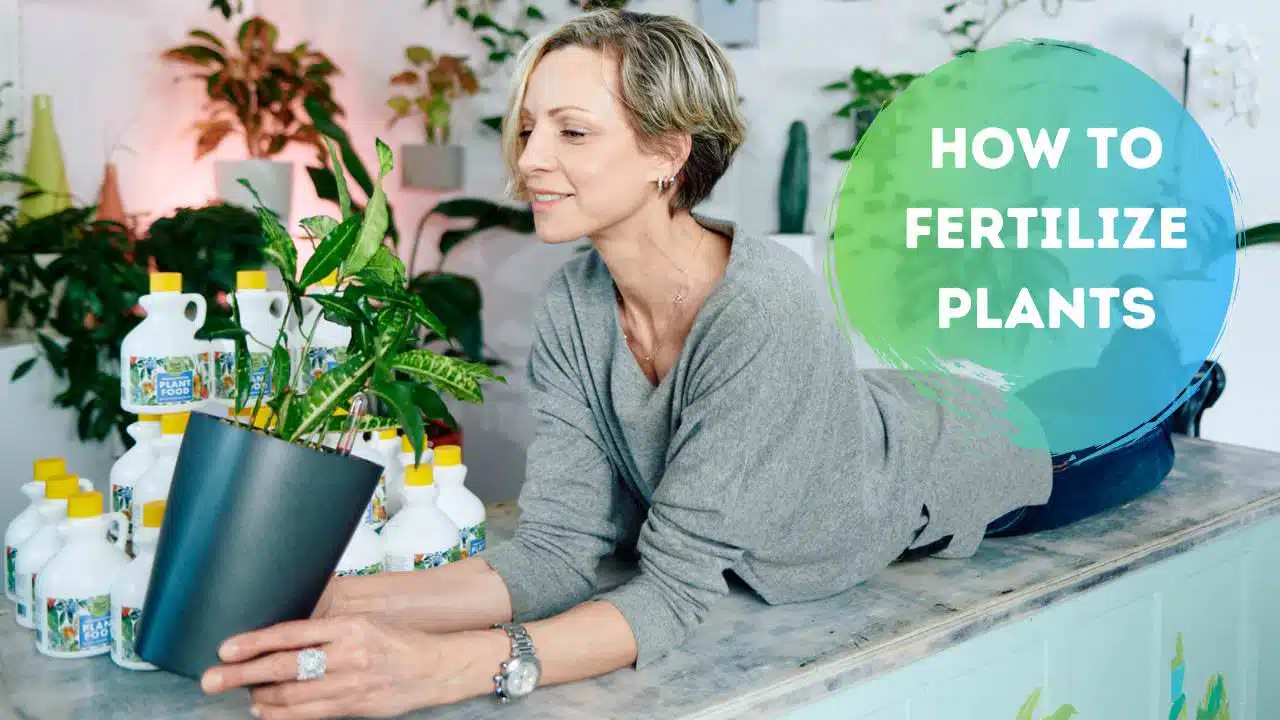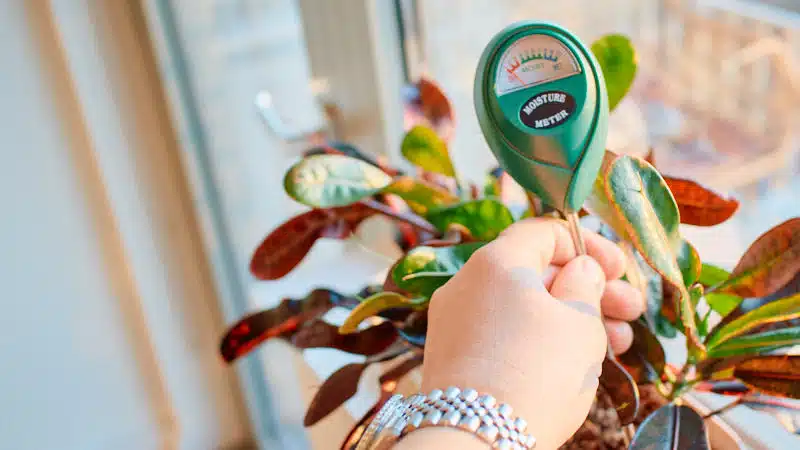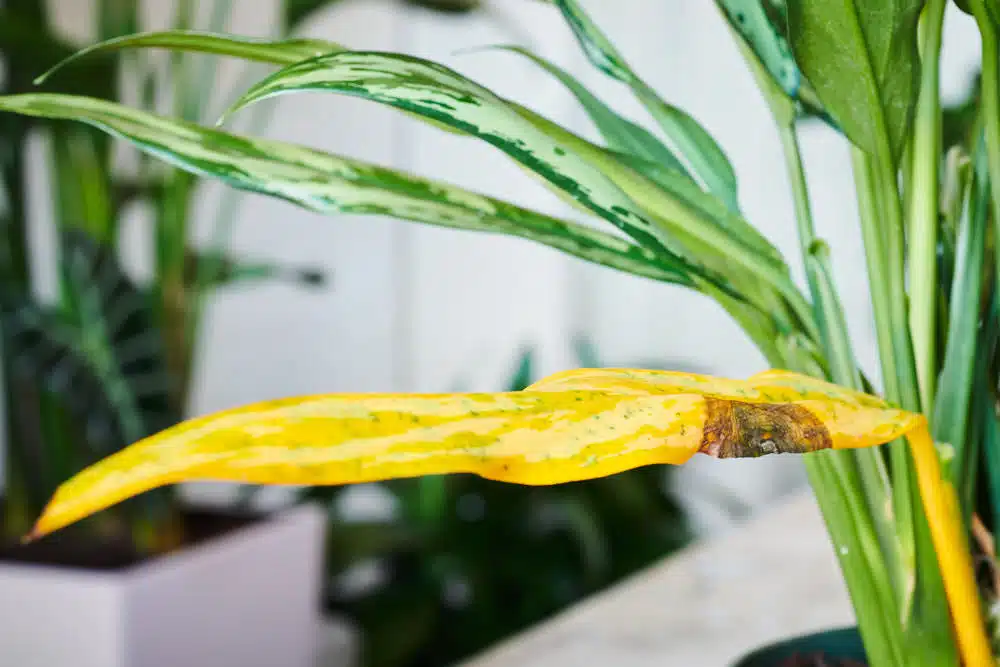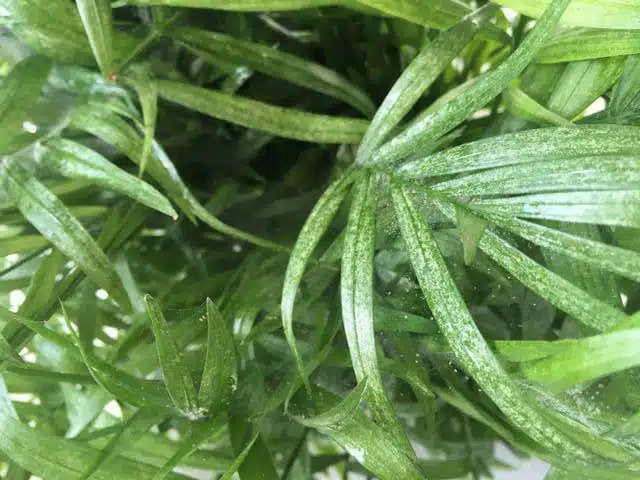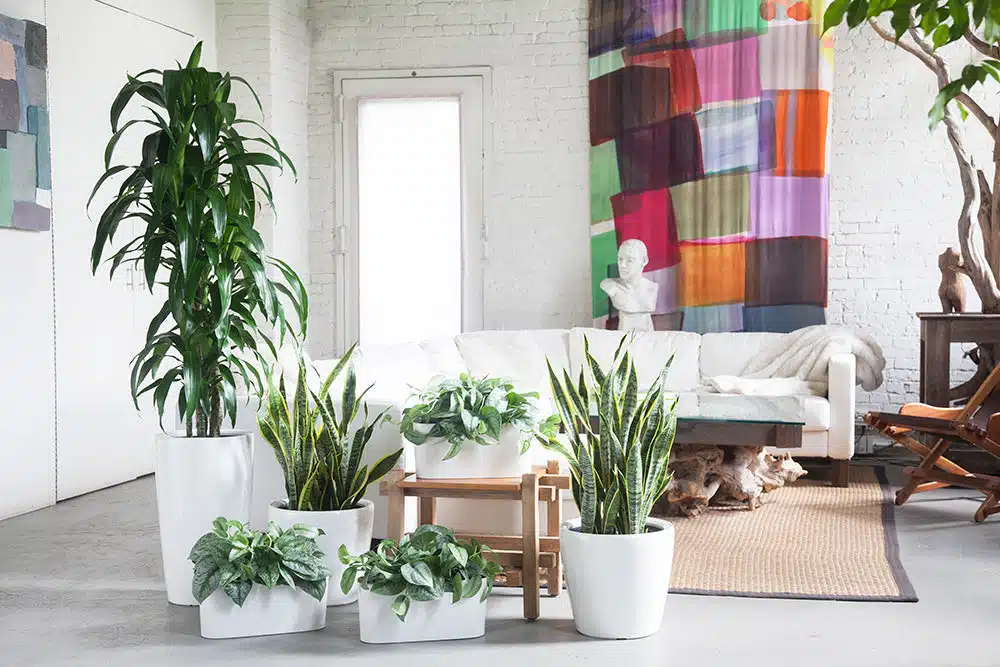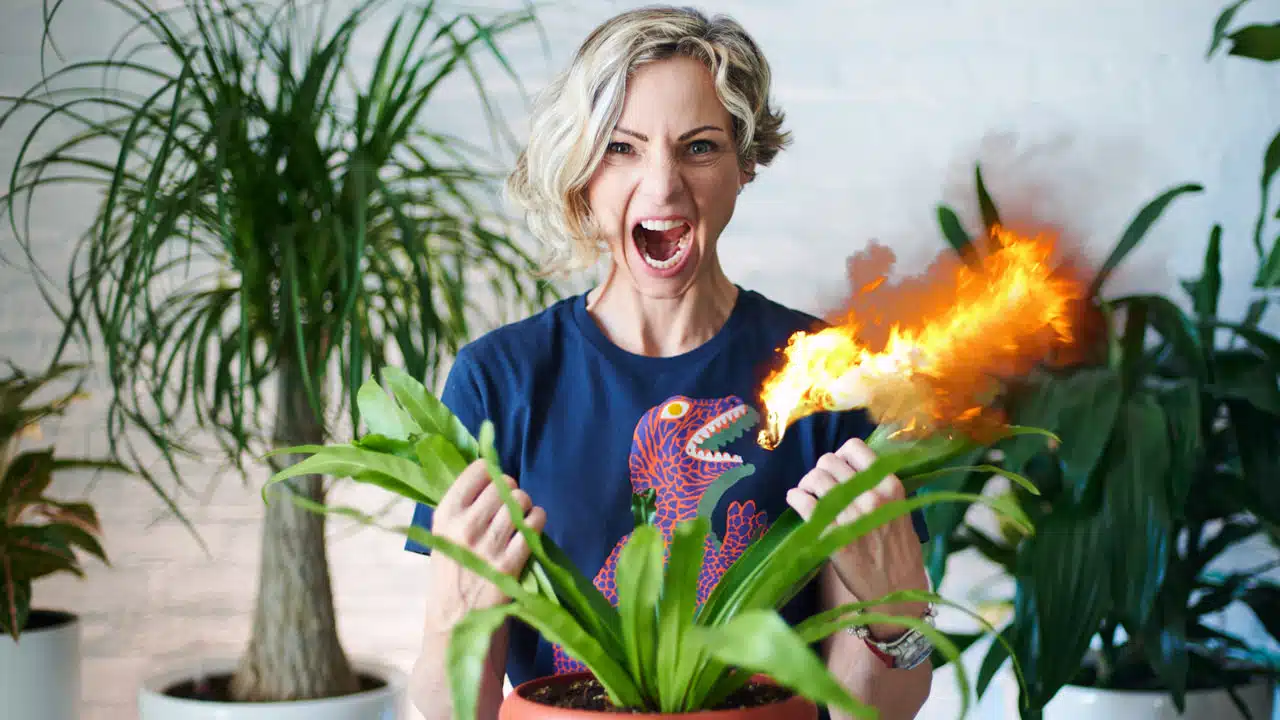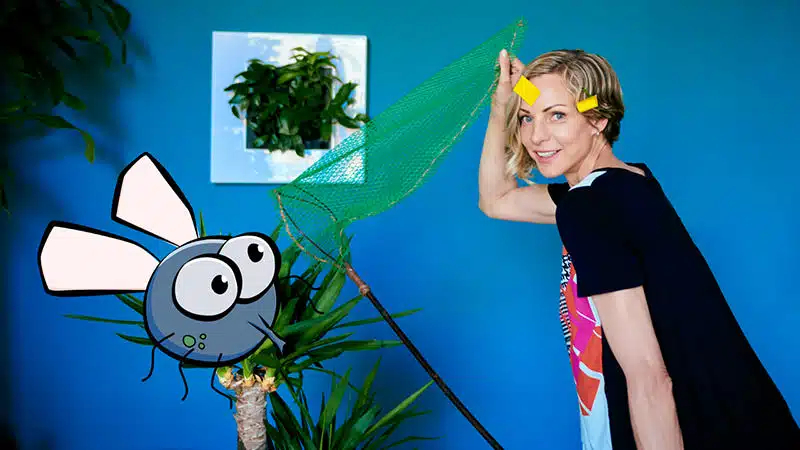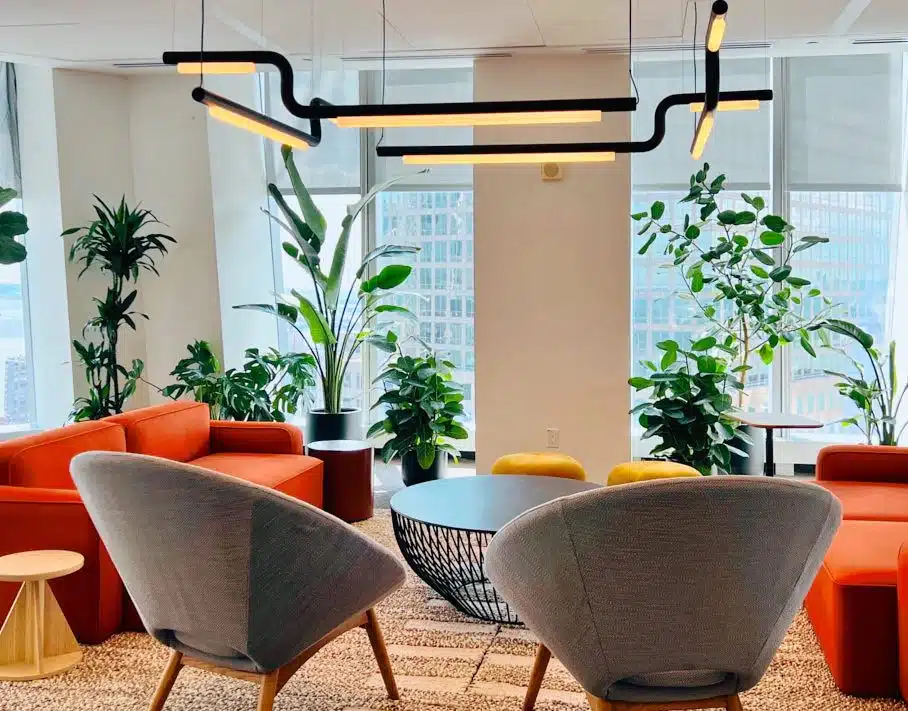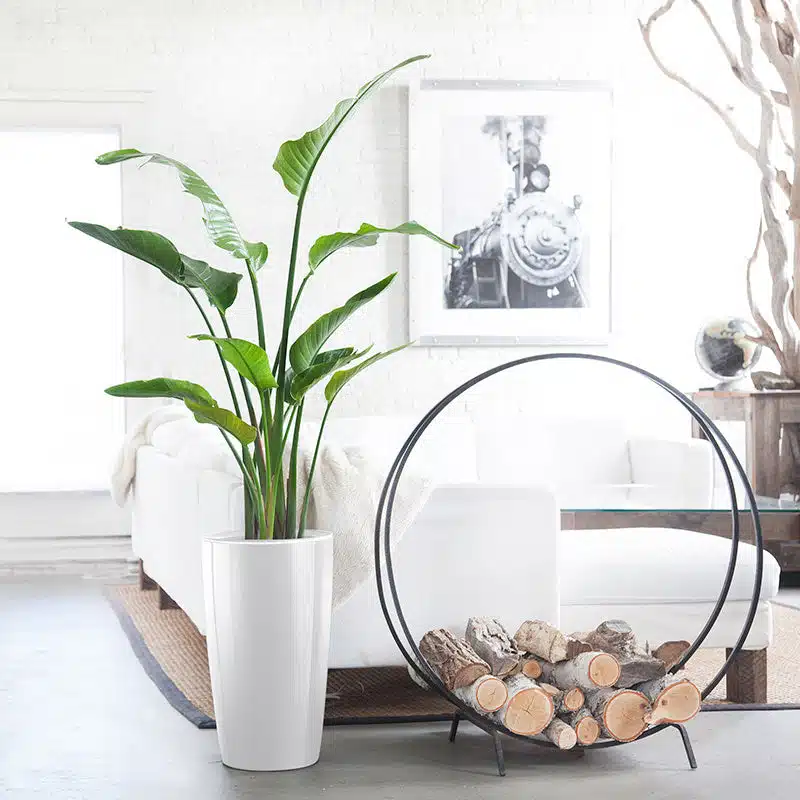
Hey there, plant lovers and bedroom decorators! Ready to transform your sleep space into a lush, green oasis?
I’ve got you covered with this ultimate guide to the 18 best plants for your bedroom. Trust me, by the time we’re done, you’ll be itching to add some leafy friends to your nighttime surroundings. !
As someone who’s turned their own bedroom into a mini jungle, I can tell you that choosing the right plants for this space is crucial. We’re not just talking about any greenery here – we want plants that’ll thrive in your bedroom’s unique environment and maybe even help you catch some better Z’s. So, let’s dive in and get your green thumb ready for action!
Understanding Bedroom Plant Requirements
Before we jump into our plant parade, let’s chat about what makes a bedroom different from other parts of your home when it comes to plant care.
1. Lower Light Levels
- Bedrooms often have smaller windows or window treatments like curtains and blinds that reduce natural light compared to other rooms with more light exposure. A comprehensive light guide can help determine the best lighting conditions for each plant type, especially since some bedrooms may also be north-facing, further limiting sunlight. To thrive in these conditions, bedroom plants usually need to be more shade-tolerant or capable of thriving in lower light..
2. Air Quality & Ventilation
- Bedrooms typically have less air circulation, especially when doors are closed at night. Poor ventilation can affect a plant’s growth, as fresh air is essential for photosynthesis. Stale air can also increase humidity levels, which might affect plants prone to mold or fungal growth.
3. Humidity Levels
- Bedrooms often have fluctuating humidity levels, especially if you use air conditioning or heating at night. Some plants, particularly tropical ones, thrive in high humidity, which may not be naturally available in a bedroom.
4. Nighttime Carbon Dioxide (CO2) Concerns
- Although plants generally absorb CO2 and release oxygen during the day, at night most plants reverse this process and take in oxygen, releasing small amounts of CO2. While the levels are negligible for most people, some prefer plants that can absorb CO2 at night (like snake plants) for a fresher-feeling environment.
5. Aesthetics and Space Constraints
- Bedrooms are often more compact, with limited floor space for larger plants but that doesn’t mean you can’t go green! Plants like pothos or spider plants are great for hanging or trailing from shelves, while tall and slim options like snake plants fit perfectly in tight spots, such as between the dresser and the wall. The goal is to create a calm, restful environment by choosing plants that complement the room’s design without being visually overwhelming.
6. Temperature Variability
- Bedrooms often experience more temperature fluctuations due to personal preferences for cooler sleeping environments at night. Certain plants may not tolerate cooler nighttime temperatures well, especially if they are tropical.
Air Quality and Plants
Plants are amazing air purifiers! But the truth is, you’d need a whole forest in your bedroom to see any real difference in air quality. That NASA study everyone talks about? It was done in a lab, not a real bedroom.
But don’t let that discourage you! Plants still purify air and do other great things for your space. They pump out oxygen, add humidity, and let’s be honest – they just make the room feel fresher and more alive. Plus, there’s something seriously zen about being surrounded by nature while you sleep.
Top 18 Bedroom Plants
Alright, drum roll, please! Here’s my curated list of the best plants to bring into your bedroom. I’ve chosen these green buddies based on how easy they are to care for, how well they adapt to indoor life, and of course, how good they look. Let’s meet your potential new roommates!
1. Snake Plant (Sansevieria)

First up, we’ve got the snake plant. This tough cookie is perfect if you’re new to plant parenthood. Its tall, sword-like leaves look super cool and make it one of the best plants for your bedroom. Not only can it handle a bedroom environment like a champ, but it also produces oxygen at night, improving air quality while you sleep!
Care tips:
- Water it? Maybe once a month, when the soil is completely dry all the way through. Seriously, it’s that low-maintenance.
- It’ll be happy in any light, from low to bright indirect.
- Air Purification: They are effective at removing toxins such as formaldehyde, benzene, and xylene from the air.
2. Pothos (Epipremnum aureum)

Next on my list of the best plants for bedroom spaces is the Pothos – the ultimate “oops, I forgot to water it” plant. This trailing beauty comes in lots of pretty variegations and is perfect for that bookshelf or hanging basket. Pothos will signal its thirst by drooping its leaves, but it’s very forgiving when neglected and will perk right back up as soon as it’s watered.
Care tips:
- Let the soil dry out a bit between waterings.
- It’ll grow in low light, but give it bright indirect light if you want it to really thrive.
- Want more? Just snip off a piece and stick it in water. Boom – new plant!
- Air Purification: This plant is well-known for its ability to filter indoor air pollutants, including formaldehyde, benzene, and carbon monoxide.
3. Spider Plant (Chlorophytum comosum)

Spider plants are like the gift that keeps on giving, making them one of the best plants for bedroom decor. They’ll grow cute little “babies” that you can snip off and grow into new plants. Free plants, anyone? Spider plants are also known to produce oxygen at night. Plus, they’re safe for pets, which is always a win in my book.
Care tips:
- Keep the soil a little moist, but not soggy.
- They like bright, indirect light but can tolerate low light too.
- Air Purification: Spider plants are known for their ability to remove indoor air pollutants, including formaldehyde and xylene.
4. Peace Lily (Spathiphyllum)

Peace Lilies are the drama queens of the plant world – in a good way! They’re among the best plants for bedroom environments because of their air-purifying abilities and beautiful white flowers. Just like Pothos plants, they’ll let you know when they need water by drooping their leaves, making care straightforward. Plus, their white flowers are just gorgeous.
Care tips:
- Keep the soil moist, but don’t overdo it.
- They can handle low light, but will flower better in brighter spots.
- Air Purification: They are renowned for their air-purifying capabilities and can remove harmful chemicals such as ammonia, benzene, formaldehyde, and trichloroethylene from the air.
5. ZZ Plant (Zamioculcas zamiifolia)

If you’re looking for one of the best plants for bedroom spaces that’s practically immortal, meet the ZZ plant. This glossy-leaved beauty can handle neglect like a pro, making it perfect for those who want an easy-care option. With minimal ZZ plant care requirements and its ability to thrive in low-light conditions, it’s no wonder this resilient houseplant has become a favorite among both novice and experienced plant parents.
Care tips:
- Water it when the soil is completely dry. That might be once a month!
- It’ll grow in any light, from low to bright.
- Air Purification: Can contribute to air purification by removing certain toxins from the air, such as xylene, toluene, and benzene.
6. Dracaena Species

Dracaenas like the Corn Plant in the image are among the best plants for bedroom decor because they come in so many varieties, making it easy to find one that fits your style. These plants are like the chameleons of the plant world, ensuring there’s a perfect match for every space.
Care tips:
- Let the soil dry out at least half way through between waterings.
- They’re flexible with light – low to bright indirect works.
- Some can get pretty tall, so have those pruning shears ready!
- Air Purification: They are effective at removing toxins like formaldehyde, benzene, and trichloroethylene from the air.
7. Philodendrons

Heart-leaf philodendrons are one of the best plants for bedroom spaces, offering versatility with their ability to trail or climb, depending on how you style them. These classic beauties are also super easy to care for, making them a great choice for beginners.
Care tips:
- Water when the soil is dry at least halfway through.
- They love medium to bright indirect light.
- You can train them to climb a moss pole or let them trail down from a shelf.
- Air Purification: They are particularly good at filtering indoor air pollutants, including formaldehyde and other volatile organic compounds (VOCs).
8. Chinese Evergreen (Aglaonema)

Chinese evergreens are one of the best plants for bedroom spaces, especially if you have low-light conditions. Their patterned leaves add a pop of color and interest to any corner, making them perfect for brightening up your room effortlessly.
Care tips:
- Water when the soil is dry almost all the way through.
- They’re cool with low light, but variegated ones like it a bit brighter.
- Come in lots of pretty colors and patterns.
- Air Purification: This plant is renowned for its air-purifying qualities and can remove harmful chemicals such as formaldehyde and benzene from the environment.
9. Rubber Plant (Ficus elastic)
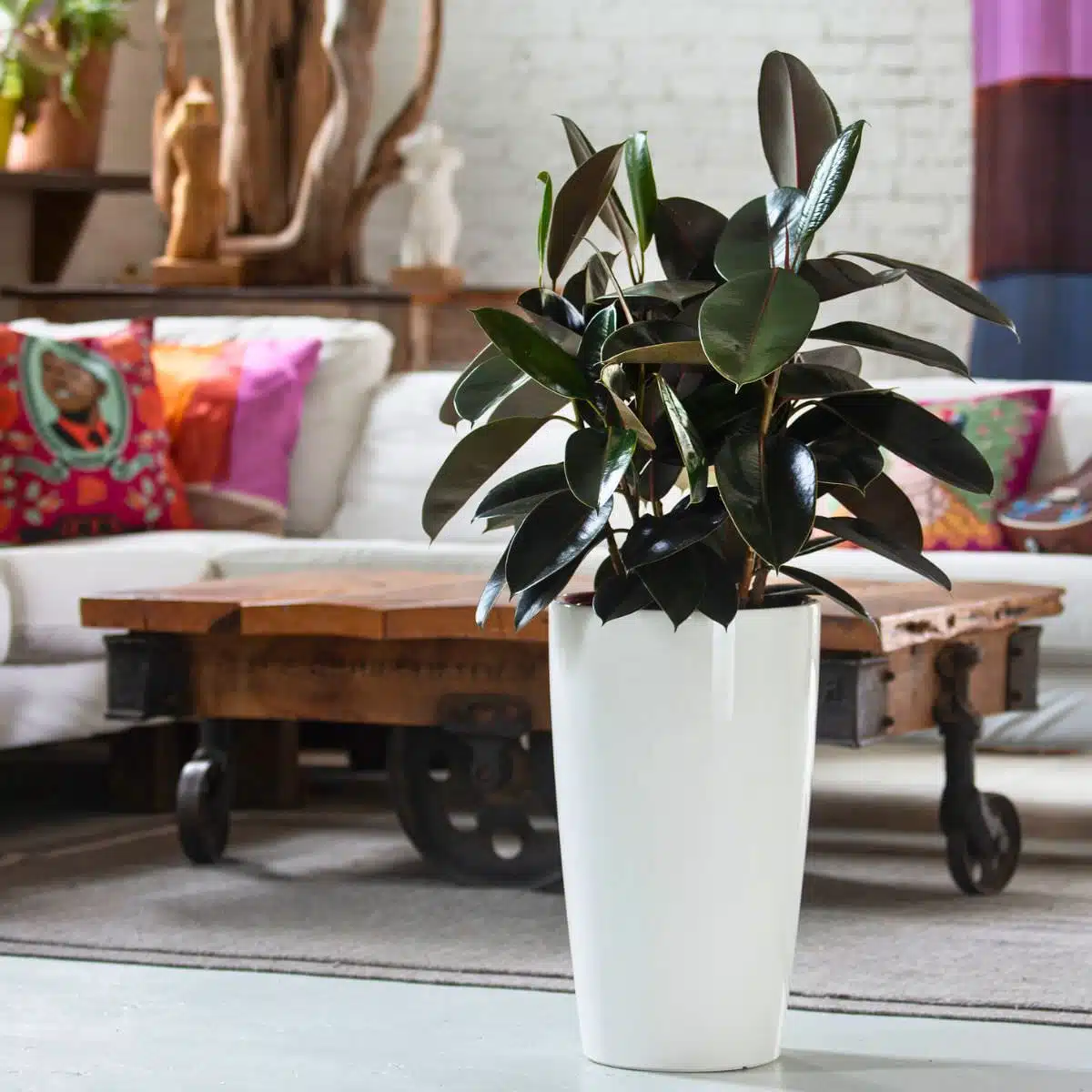
If you’re looking to make a statement, the Rubber Plant is one of the best plants for bedroom decor. Its big, glossy leaves are sure to turn heads and add a bold, stylish touch to your space.
Care tips:
- Let the top inch of soil dry halfway through between waterings.
- They prefer bright, indirect light.
- Can grow pretty big, so keep those pruning shears handy!
- Air Purification: Rubber plants are effective at removing toxins such as formaldehyde from the air.
10. Parlor Palm (Chamaedorea elegans)
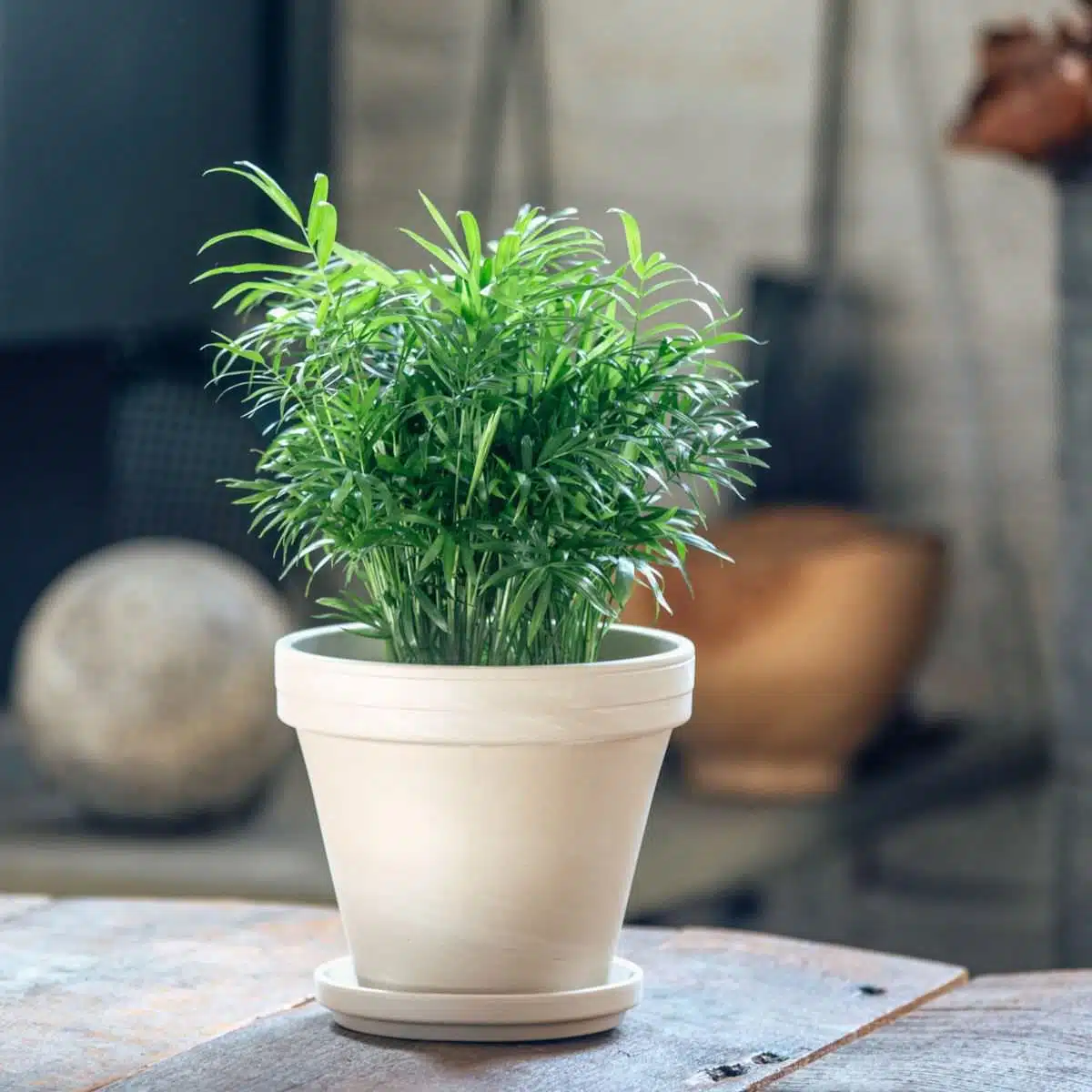
Bring a touch of the tropics to your bedroom with a Parlor palm, one of the best plants for bedroom decor. These plants are perfect for adding some texture and height to your space, creating a lush, relaxing environment.
Care tips:
- Keep the soil consistently moist, but not waterlogged.
- Happy in low to bright indirect light.
- Grows slowly, so no need to worry about it taking over your room.
- Air Purification: Parlor Palms are known for their ability to filter indoor air pollutants and are particularly effective at removing formaldehyde and other toxins.
11. English Ivy (Hedera helix)
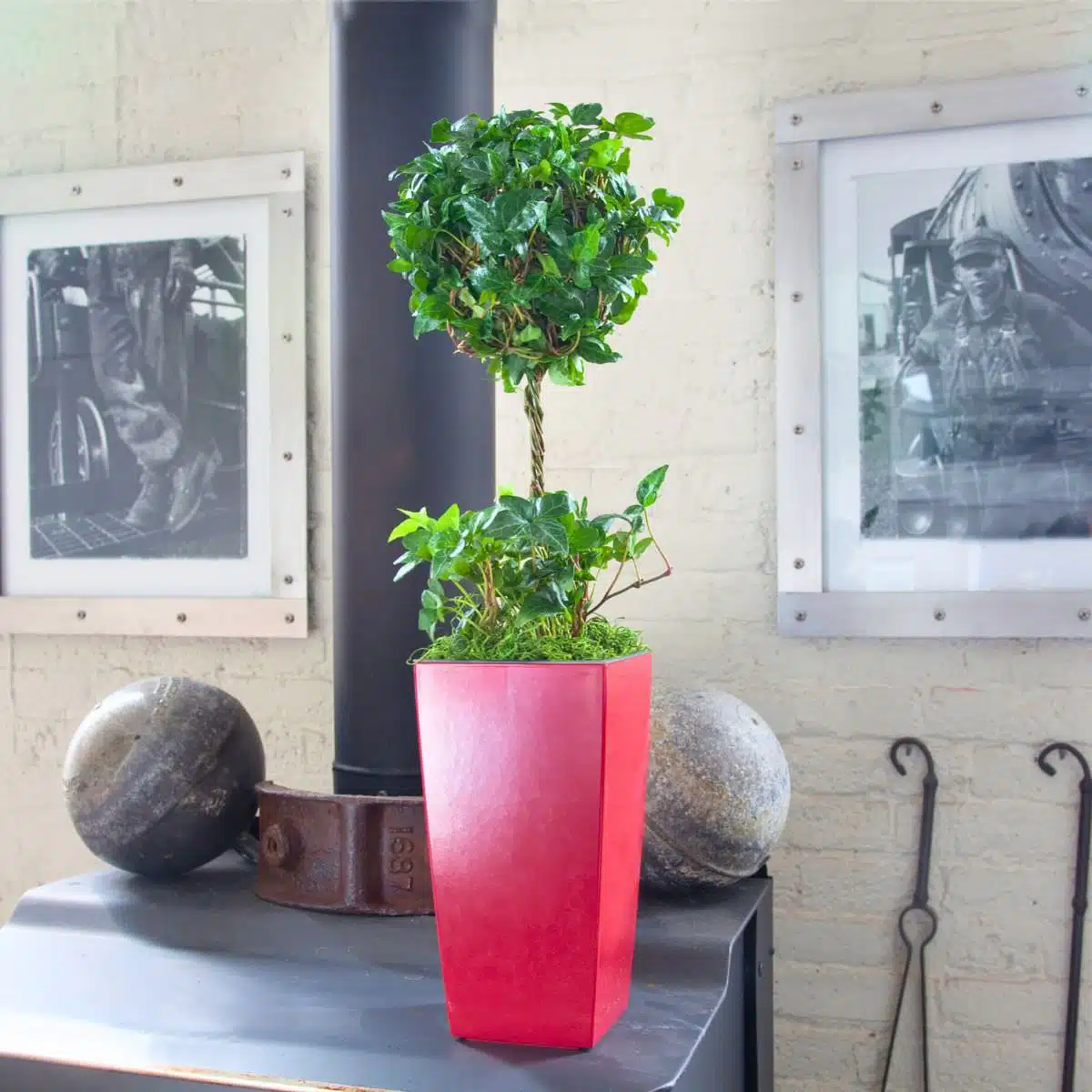
English Ivy is one of the best plants for bedroom decor, adding a touch of elegance with its classic trailing vines. It’s perfect for shelves or hanging baskets, bringing a charming and graceful look to your space.
Care tips:
- Keep the soil slightly moist.
- Prefers bright, indirect light but can handle lower light conditions.
- Can be trained to grow on trellises or allowed to trail freely.
- Air Purification: English Ivy is known for its ability to remove indoor air pollutants, particularly formaldehyde, benzene, and xylene.
12. Aloe Vera
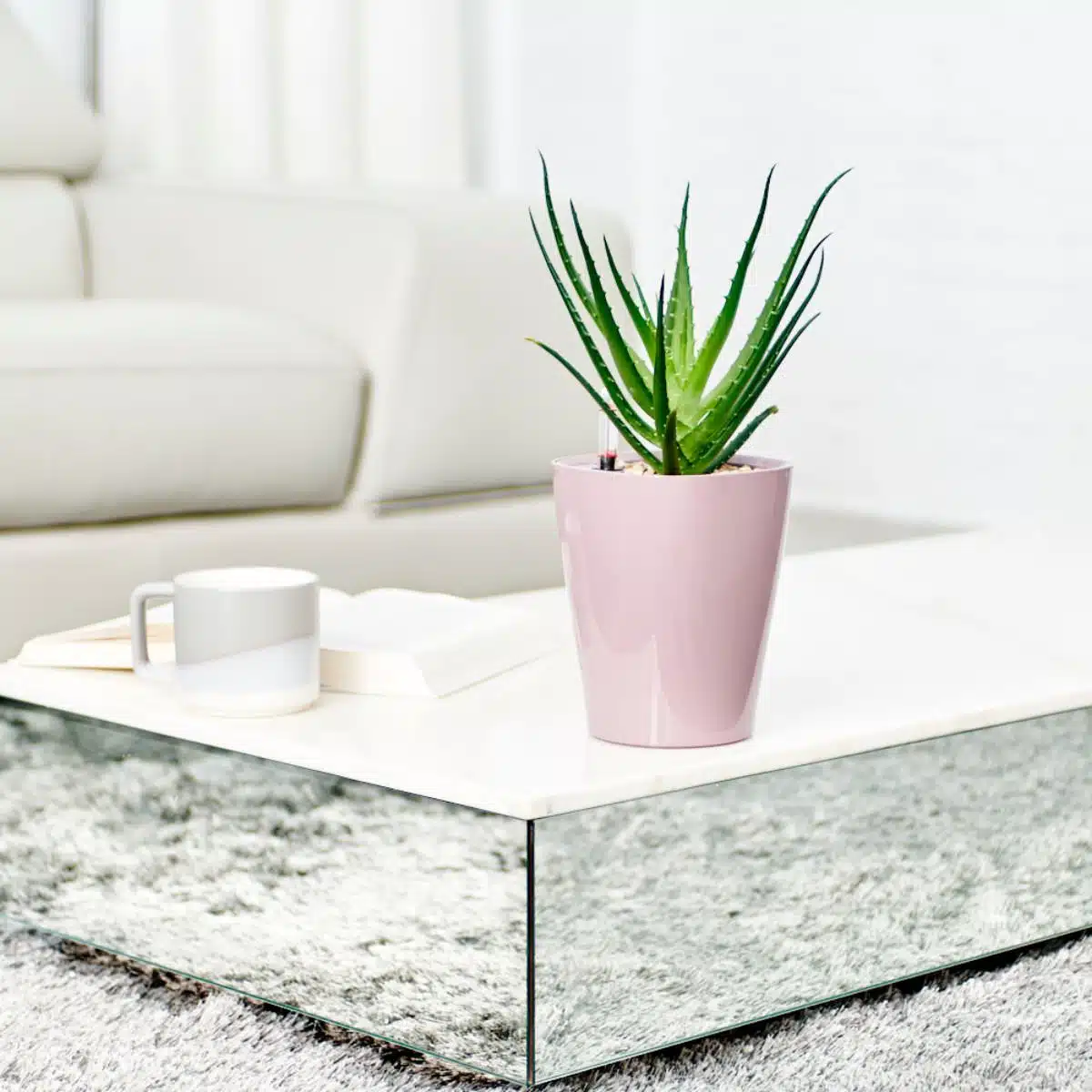
Aloe vera is not only one of the best plants for bedroom spaces but also incredibly practical! It has healing properties and is often used for its gel, which can soothe skin irritations and burns. Additionally, aloe vera plants are known for producing oxygen at night, making them a great choice for improving bedroom air quality.
Care tips:
- Let the soil dry out completely between waterings.
- Loves bright, indirect light.
- Make sure it’s in well-draining soil and the pot has drainage to prevent root rot.
- Air Purification: Aloe Vera is known for its ability to purify the air by absorbing formaldehyde and benzene.
13. Boston Fern (Nephrolepis Exaltata)
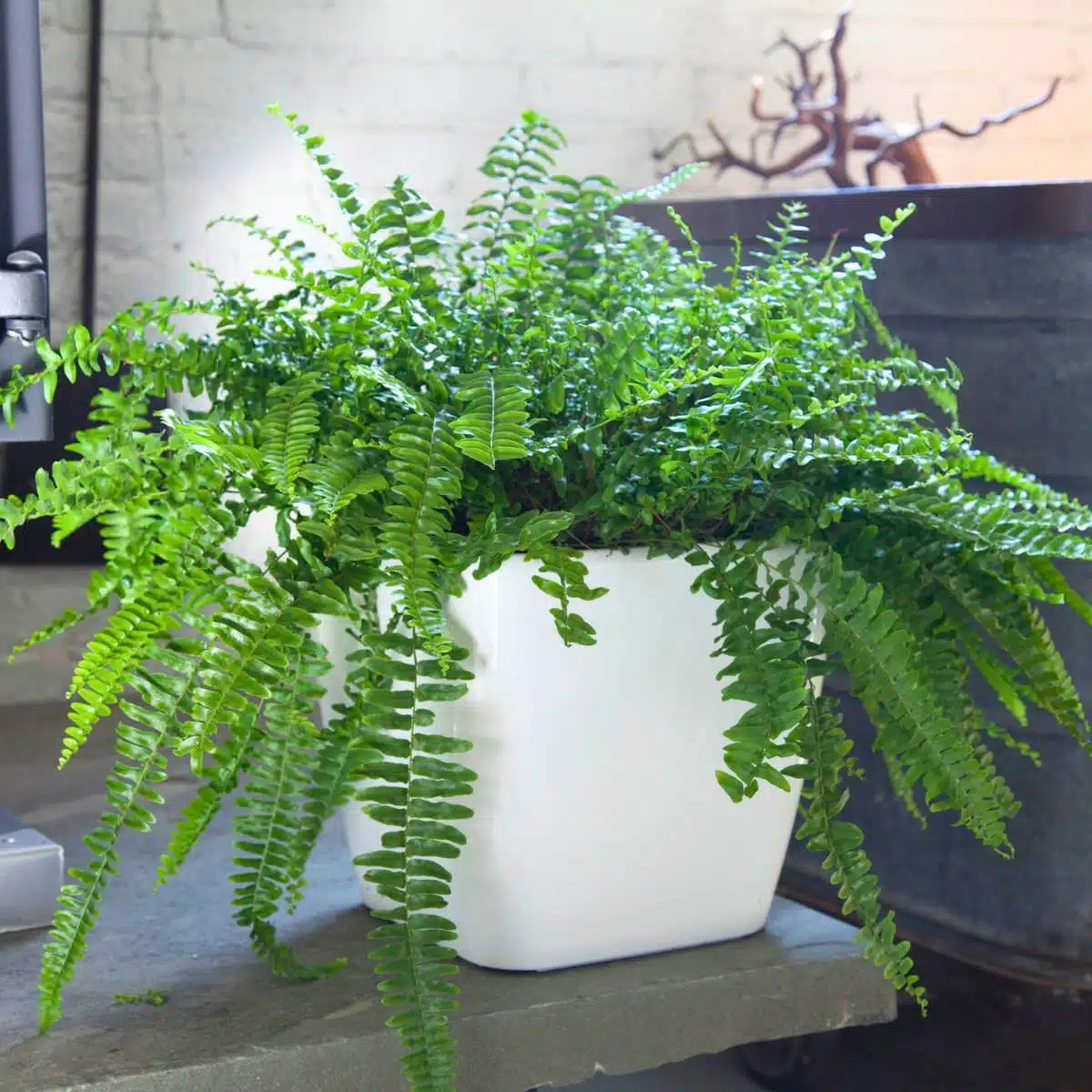
If you want to feel like you’re sleeping in a tropical paradise, the Boston fern is one of the best plants for bedroom spaces. Its lush, feathery fronds add instant jungle vibes, creating a serene, nature-inspired atmosphere. They do shed their fronds in low humidity and during seasonal changes, so be ready to sweep up their stylish little leftovers. Shedding older leaves to make room for new growth is just part of their fabulous cycle. Keep a broom nearby!
The Boston Fern might not be the friendliest plant for beginners—actually, it made my list of the top 10 worst plants for newbies!
If you’re just starting your plant journey, I’d recommend picking another green buddy from this list for your bedroom… unless, of course, you’re feeling adventurous and up for a challenge.
Care tips:
- Keep the soil consistently moist.
- Loves bright, indirect light and high humidity.
- Mist it regularly to keep it happy and lush.
- Air Purification: Boston Ferns are excellent air purifiers and are particularly effective at removing formaldehyde and other toxins from the air.
14. Monstera Deliciosa (Swiss Cheese Plant)
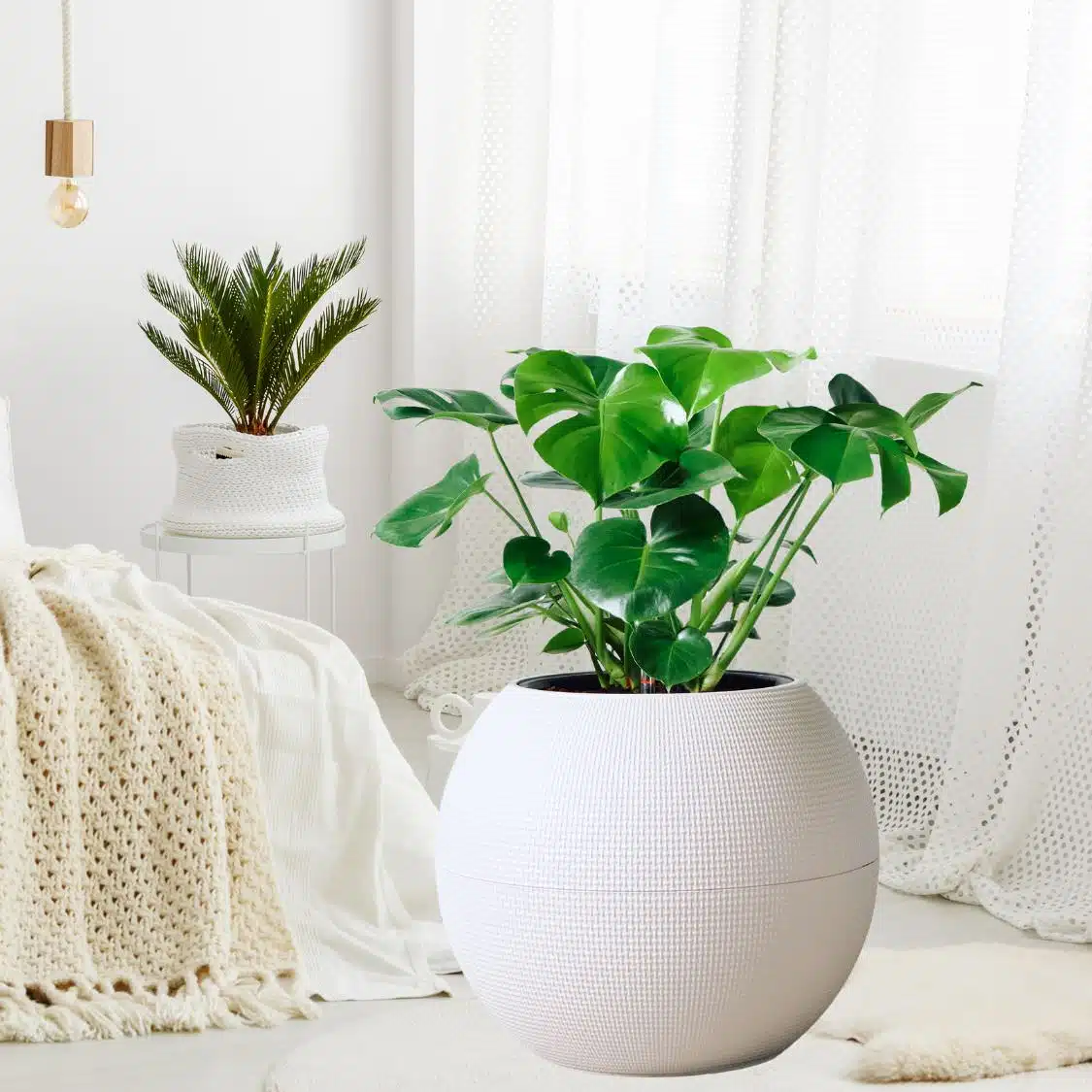
The Monstera Deliciosa is one of the best plants for bedroom spaces, thanks to its quirky, hole-punched leaves that make it a real conversation starter. Plus, it’s easier to care for than you might think – just make sure you have enough space, as this plant grows wide quite fast!
Care tips:
- Water when the soil is dry almost all the way through.
- Thrives in bright, indirect light.
- Can get big, so be prepared to prune it back.
- Air Purification: Monstera is known for its ability to filter indoor air pollutants, including formaldehyde and xylene.
15. Bamboo Palm (Chamaedorea Seifrizii)
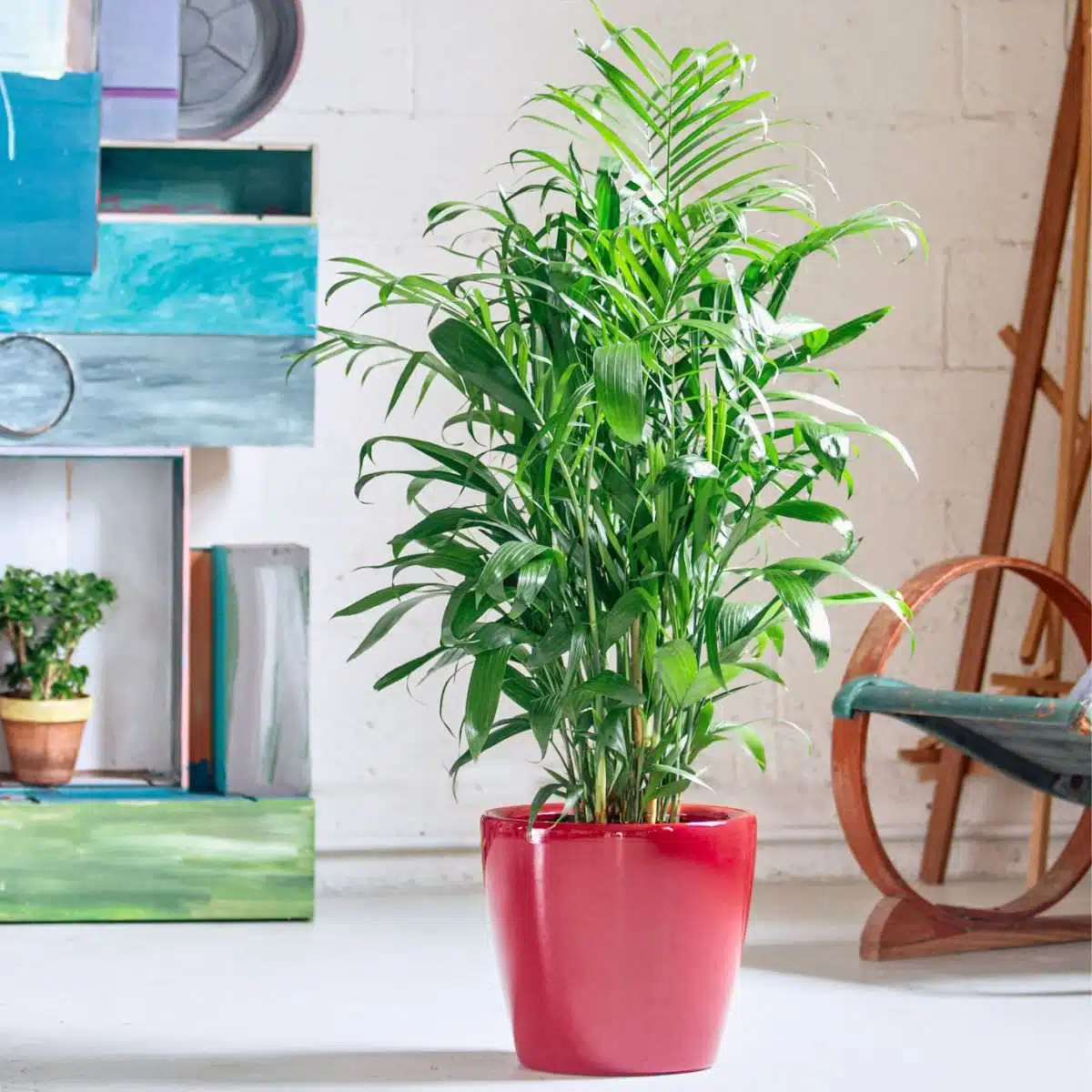
If you want to feel like you’re on a tropical getaway every night, the bamboo palm is one of the best plants for bedroom spaces. Its lush foliage can instantly transport you to paradise, creating a relaxing and inviting atmosphere.
Care tips:
- Keep the soil consistently moist.
- Happy in bright, indirect light but can handle lower light too.
- Likes it humid, so mist it regularly or use a pebble tray, or humidifier.
- Air Purification: It is one of the top air-purifying plants according to NASA’s Clean Air Study. It effectively removes toxins such as formaldehyde, benzene, and trichloroethylene from the air.
16. Dieffenbachia (Dieffenbachia seguine)

Dieffenbachia is one of the best plants for bedroom decor, thanks to its big, bold leaves that can add some serious drama to your space. It’s perfect for creating a striking and stylish look in your room.
Care tips:
- Water when the soil is dry almost all the way through.
- Adapts to low or bright indirect light.
- Keep away from pets and kids – it can be toxic if ingested.
- Air Purification: Dieffenbachia is effective at removing indoor air toxins, particularly formaldehyde and other volatile organic compounds (VOCs).
17. Peperomia
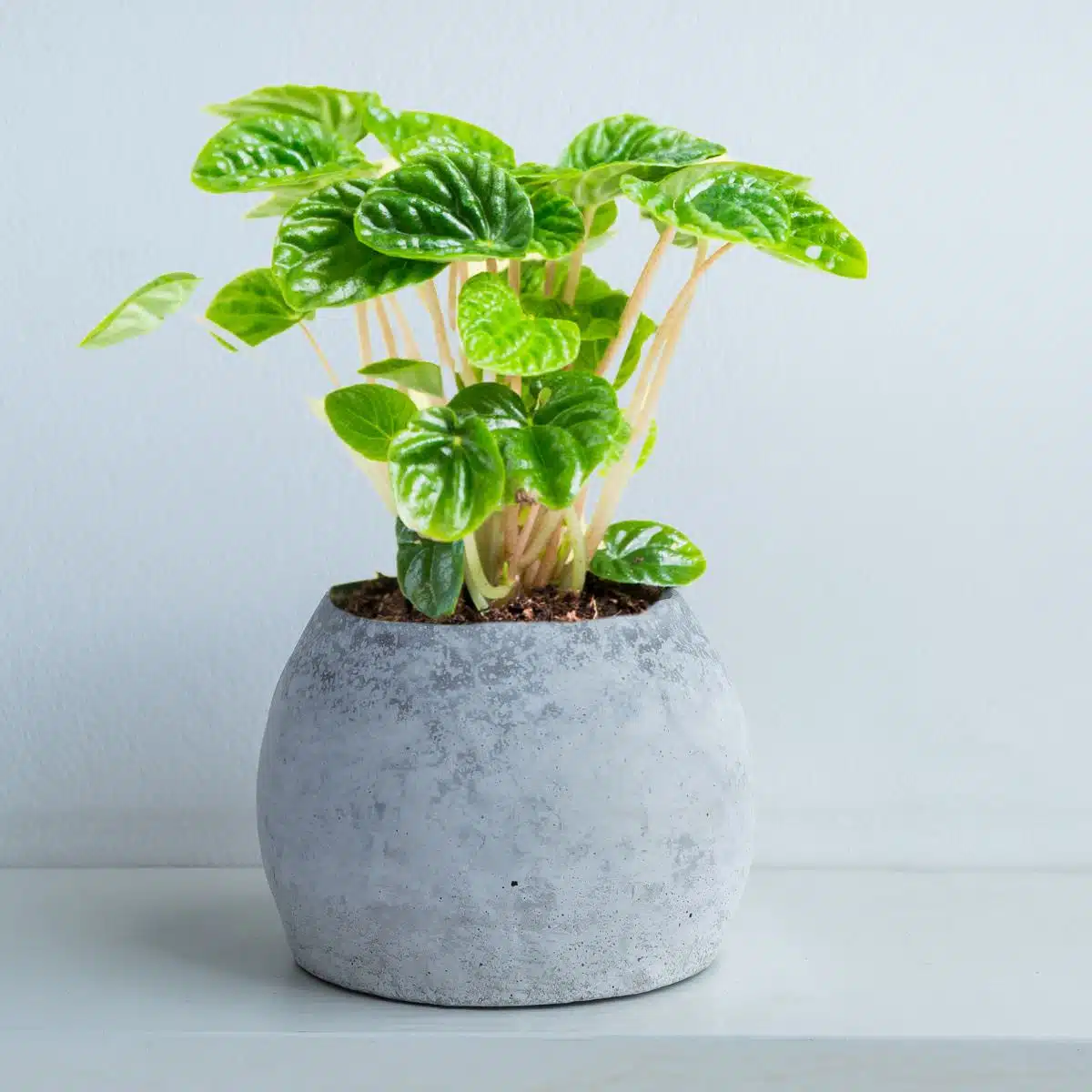
Peperomias are among the best plants for bedroom decor, especially for small spaces or bedside tables. These adorable, compact plants bring a touch of charm, and their diverse leaf shapes and vibrant colors add personality without taking up much room.
Care tips:
- Let the soil dry out a bit between waterings.
- Prefers bright, indirect light but can handle lower light too.
- Slow-growing and low-maintenance – perfect for busy plant parents!
- Air Purification: It can help filter out pollutants such as formaldehyde and xylene, contributing to a healthier indoor environment.
18. Schefflera Amate
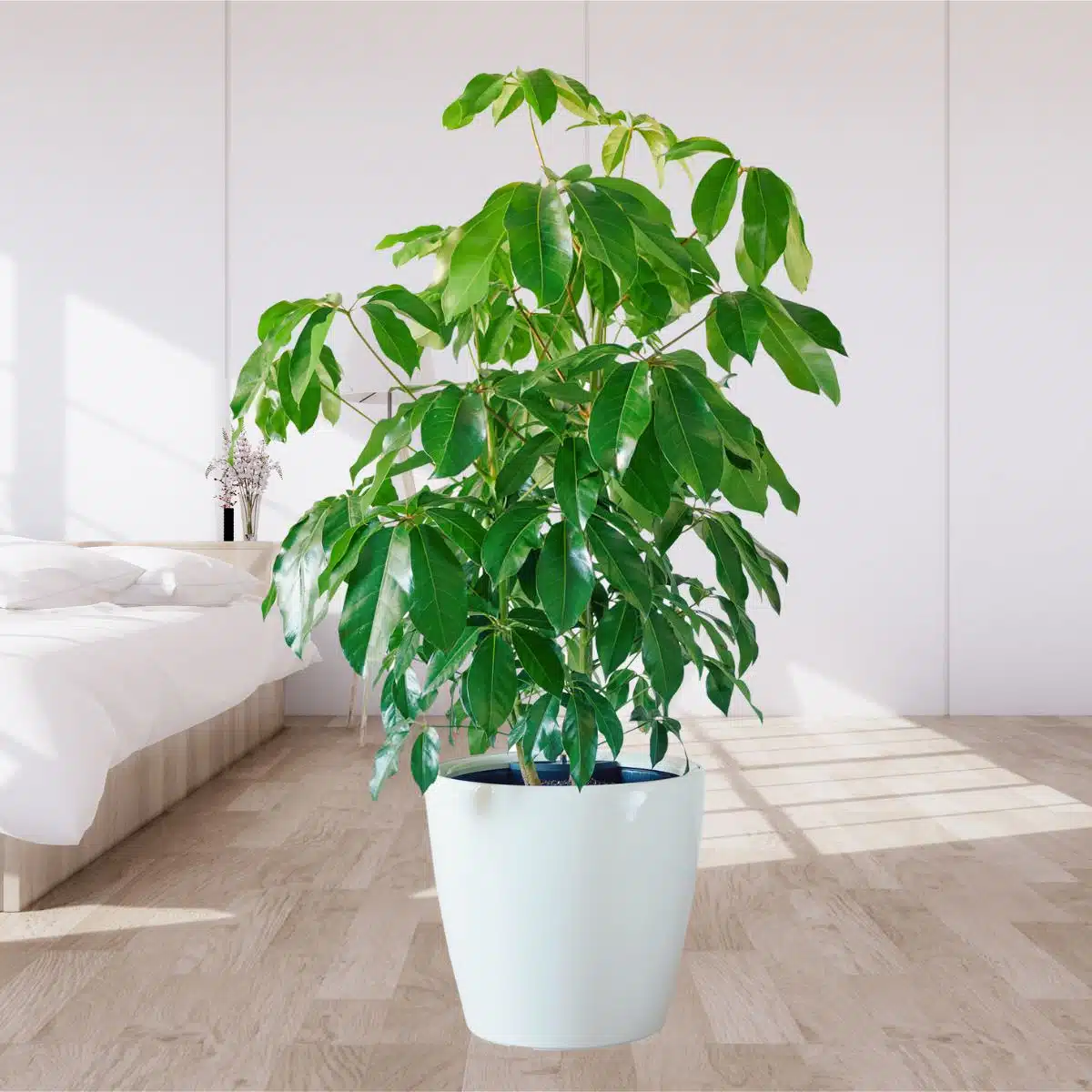
Schefflera is one of the best plants for bedroom decor, thanks to its unique leaf structure that adds visual interest to any bedroom corner. It’s a perfect choice for enhancing the style and feel of your space.
Care tips:
- Water when the soil is dry halfway through.
- Thrives in bright, indirect light.
- Can be pruned to keep it at your desired size and shape.
- Air Purification: Schefflera is effective at removing indoor air toxins, particularly formaldehyde.
Care Tips for Bedroom Plants
Alright, now that you’ve met your potential green roommates, let’s talk about how to keep them happy and healthy.
Watering Basics
Watering is where most new plant parents stumble, but don’t worry – I’ve got you covered. Most indoor plants like their soil to dry out a bit between waterings. Here’s my foolproof method:
- ALWAYS test the soil before watering!
- Stick your finger as deep as possible into the soil.
If it feels dry, it’s watering time!
- Use the Soil Moisture Meter to test the soil – this is my go-to tool for establishing a proper watering frequency.
- Make sure your pots have DRAINAGE holes. Nobody likes wet feet, including plants!
Light Management
If your bedroom’s a bit on the dark side, don’t stress. You can always use grow lights to give your plants a boost. LED grow lights are great – they’re energy-efficient and you can put them on timers to mimic natural daylight. Oh, and don’t forget to rotate your plants now and then for even growth.
Humidity and Temperature
A lot of our leafy friends, especially the tropical ones, love a bit of humidity. Here are some easy ways to up the moisture:
- Put a pebble tray with water under your plant.
- Group your plants together – they’ll create their own little humid microclimate.
- Use a small humidifier in your room.
Most houseplants are happy with temperatures between 60-75°F (15-24°C), which is pretty much perfect for sleeping too!
Air Circulation
It is advisable to keep the doors open when the room is not in use or to have a fan running during the day to circulate the air.
Pest Prevention
Nobody wants uninvited guests in their bedroom – especially not plant pests! Here’s how to keep the bugs at bay:
- Wipe down your plant’s leaves regularly with a damp cloth. It’ll keep them dust-free and help you spot any pests early.
- If you do see any creepy crawlies, try neem oil or insecticidal soap. They’re natural and effective.
- If one plant gets pests, isolate it right away to prevent a full-on invasion.
Arranging Plants in Your Bedroom
Now for the fun part – decorating with your new green friends!
Design Tips
Here’s how to make your bedroom look like it belongs in a home decor magazine:
- Mix it up! Use plants of different heights and textures for visual interest.
- Choose pots that complement your bedroom decor.
- Make a statement with one larger plant as a focal point.
- Incorporate plants into your existing shelving or use cute plant stands.
Functional Placement
Let’s be practical here. When you’re placing your plants:
- Keep them away from electronics. Plants and gadgets don’t always mix well.
- Make sure they’re not blocking any air vents or radiators.
- Use trailing plants to soften the edges of furniture or shelving.
And there you have it, folks! Your complete guide to creating a green oasis in your bedroom.
Remember, the key to success with bedroom plants is choosing varieties that match your light conditions and lifestyle. Don’t be afraid to experiment and find your perfect plant pals. Before you know it, you’ll be waking up in your very own sleep sanctuary, surrounded by lush, green life.
Sweet dreams and happy planting! 💤💤


